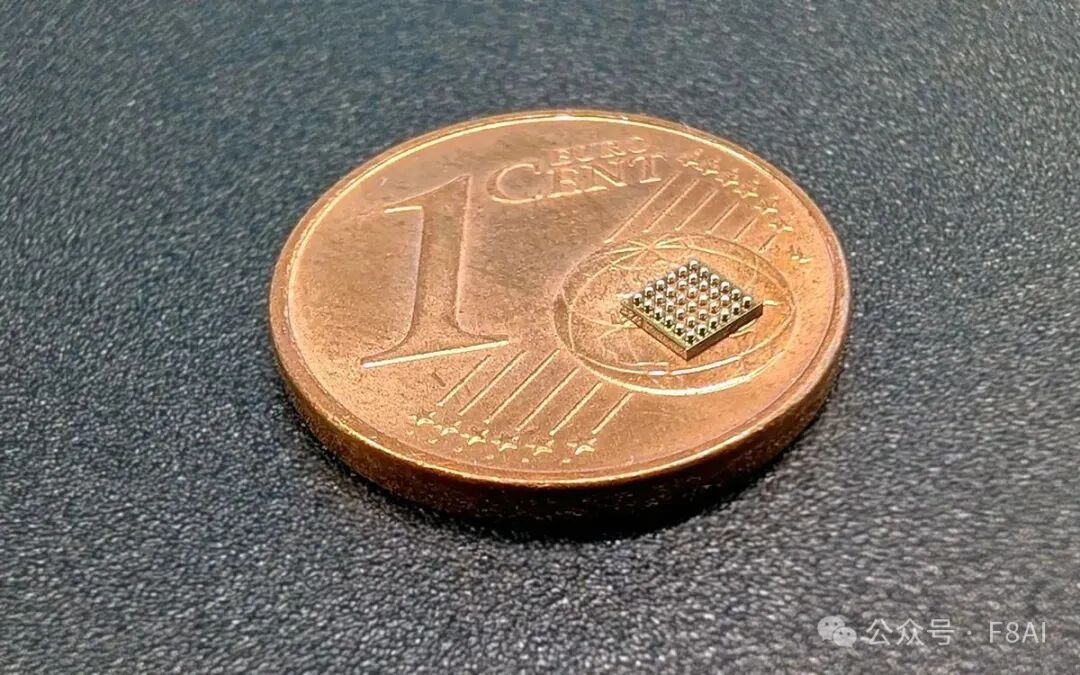
Innatera’s new neuromorphic chip is optimized for artificial intelligence at the network edge. Innatera
by mimicking the way the brain operates, neuromorphic processors consume significantly less power in certain applications compared to traditional technologies. Today, the Dutch company Innatera has launched what it claims to be the world’s first commercial neuromorphic microcontroller, hoping to drive the mainstream market application of this emerging technology.Innatera states that its new chip, Pulsar, can reduce latency to one percent of that of traditional processors, with power consumption only one five-hundredth of what is required for AI applications. Innatera co-founder and CEO Sumeet Kumar said: “Today, most AI accelerators must make trade-offs between performance and power consumption. They either run simplified AI models to reduce power or increase accuracy and raise the required power. With Pulsar, you don’t have to give up anything.”Neuromorphic Chips Simulate Brain FunctionsNeuromorphic devices typically simulate the brain’s operation in various ways. For example, traditional microchips use regularly emitted clock signals to coordinate circuit actions, while neuromorphic architectures typically only “fire”—that is, produce output signals—when a certain amount of input signals is received within a given time.One key application often envisioned for neuromorphic technology is to implement brain-inspired neural networks, which are the primary AI systems currently in use. Additionally, pulse neuromorphic devices emit pulses infrequently, meaning they process far less data than electronic devices running conventional neural networks. Therefore, in principle, neuromorphic hardware requires significantly less power and communication bandwidth for AI applications.So far, neuromorphic devices have not seen widespread adoption. Now, Innatera hopes that the Pulsar, set to launch on May 21, can overcome the long-standing commercialization barriers faced by neuromorphic computing.The Pulsar chip features a hybrid analog-digital architecture. In addition to 12 digital cores for pulse neural networks, it also has 4 analog cores, where silicon circuits form pulse neurons and connect the synapses of each core.Kumar stated: “The analog pulse structure provides extremely high energy efficiency, while the digital pulse structure offers greater programmability and configurability while still maintaining very good energy efficiency.” He explained that developers can choose which set of cores to load their models onto based on their needs.Each Pulsar chip is also equipped with a convolutional neural network accelerator (commonly used for image recognition and natural language processing), supporting 32 multiply-accumulate (MAC) operations. Additionally, each chip includes a fast Fourier transform accelerator for efficient low-power signal processing. Each Pulsar also integrates a 32-bit RISC-V CPU, operating at up to 160 MHz for system management, along with a range of standard sensor interfaces and other components. “All of this is integrated into a small chip measuring 2.8 x 2.6 mm,” Kumar said.What Makes Pulsar Unique in the AI Sensor Field?Pulsar differs from other neuromorphic devices, such as BrainChip’s Akida Pico, in that “it not only builds a neuromorphic core but also constructs other systems around it,” Kumar said. “The industry places a lot of emphasis on inference, but when the neuromorphic core interacts with other systems, you find that they consume a lot of power during data input and output processes, quickly negating any energy gains they might provide. We built Pulsar for efficient processing, not just efficient inference.”Kumar stated that by integrating all these features, “it will become the only chip needed for sensor data processing.” This can simplify overall device design, reducing the need for complex data signal processing flows, speeding up development and time to market, lowering maintenance costs, extending battery life, and achieving sub-millisecond analysis times.Kumar noted that with sub-milliwatt power consumption, “even in extremely power-constrained devices, Pulsar can continuously process sensor data.” For example, it requires only 600 microwatts for radar-based presence detection and just 400 microwatts for audio scene classification. In contrast, similar applications using traditional electronic devices consume between 10 to 100 milliwatts.Pulsar is designed for ultra-low-power AI sensor applications in consumer electronics, industrial, and IoT environments. For instance, it can be used in smart doorbells. Currently, smart doorbells detect people by capturing motion using cameras or infrared sensors. “This makes them easily triggered by flags fluttering in the wind or car lights passing by, draining the battery,” Kumar said. “Most smart doorbells advertise battery life of three months, but in reality, they need to be recharged every two to three weeks.”Innatera is collaborating with Japanese system-on-chip company Socionext to develop a radar-based sensor that can accurately identify people based on body movements during breathing, even when they are stationary. “It can ignore disturbances like bushes swaying in the wind,” Kumar said. “It can extend the smart doorbell’s battery life to 18 months per charge. Moreover, since it is not camera-based, it does not store data in the cloud, helping to protect privacy.”A key barrier to neuromorphic computing is the steep learning curve developers face when running models on these devices. To address this, Innatera has released its Talamo software development kit to lower this barrier, allowing developers to build pulse models from scratch in a PyTorch-based environment. Kumar stated: “You don’t need a PhD in neuromorphic engineering to run neuromorphic solutions on such chips.”The company has also launched a developer program currently open to early adopters, aimed at providing hardware and software kits to the growing community of researchers. “We hope to develop a neuromorphic application ecosystem and explore areas that have never been considered before,” Kumar said.
spectrum.ieee.org